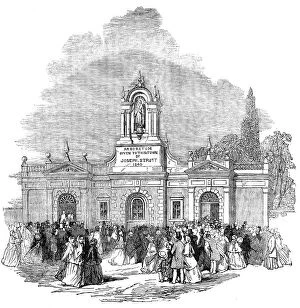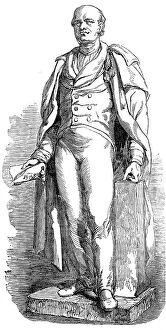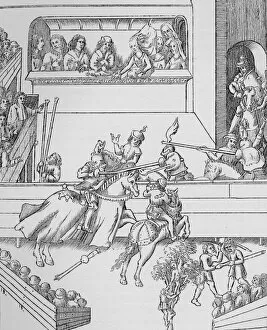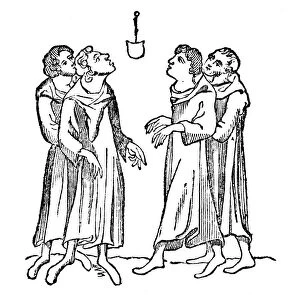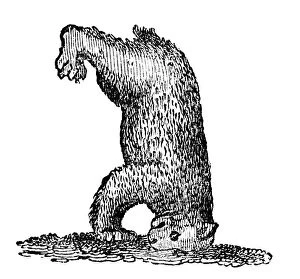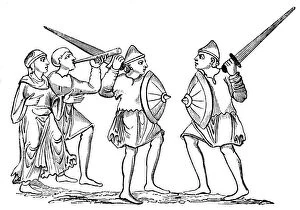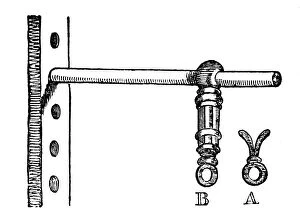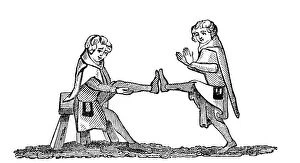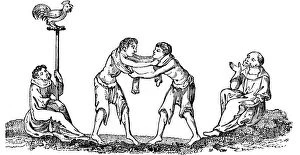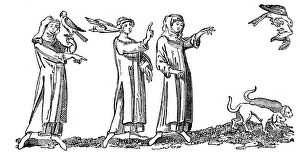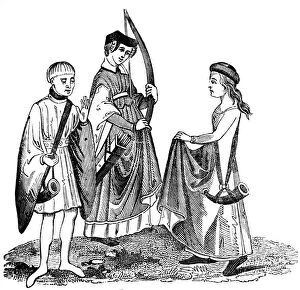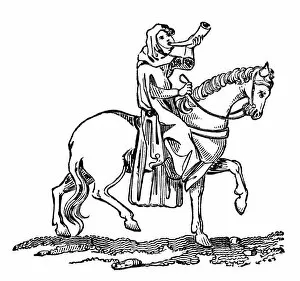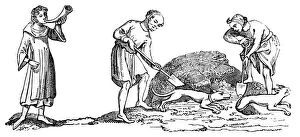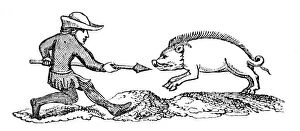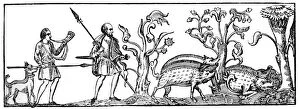Joseph Strutt Collection
Joseph Strutt (1749-1802) was a renowned artist and antiquarian, known for his detailed depictions of historical events and artifacts
For sale as Licensed Images
Choose your image, Select your licence and Download the media
Joseph Strutt (1749-1802) was a renowned artist and antiquarian, known for his detailed depictions of historical events and artifacts. His works provide us with invaluable insights into the past, capturing the essence of different eras. One of his notable pieces is a lithograph portrait displayed in the National Portrait Gallery. This captivating image allows us to catch a glimpse himself, giving us an idea of the man behind these remarkable creations. Strutt's artistic talent shines through in his depiction of the Tournament of the Earl of Warwick from the 16th century. With meticulous attention to detail, he brings this medieval spectacle to life, allowing viewers to immerse themselves in this grand event. In "The Life of Thomas Becket, " Strutt showcases his versatility as an artist by illustrating scenes from this significant historical figure's life. Through his brushstrokes, he captures both Becket's triumphs and struggles, providing a visual narrative that adds depth to our understanding. Strutt also delves into recreational activities with illustrations such as "The Pel Quintain" and "Hoodman Blind. " These images transport us back in time, offering glimpses into popular games enjoyed centuries ago. Furthermore, Strutt explores various aspects of medieval culture through artworks like "Diving for Apples" and "Bob-cherry. " These charming depictions give us insight into leisurely pursuits during that era while showcasing Strutt's ability to capture moments filled with joy and mirth. Additionally, he turns his attention towards ancient playing cards - depicting knaves, aces, kings, queens - revealing their intricate designs and cultural significance. These illustrations serve as windows into entertainment practices prevalent during earlier times. Lastly but not least importantly are Strutt’s representations related to chess: square and circular chessboards along with an illustration titled “Ancient Chess Play. ” By portraying these strategic board games dating back centuries ago; he highlights the enduring nature of this intellectual pursuit.

